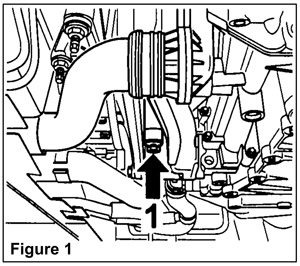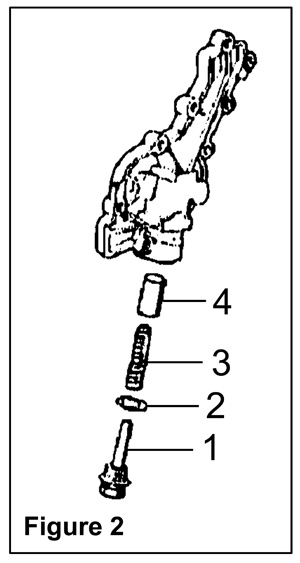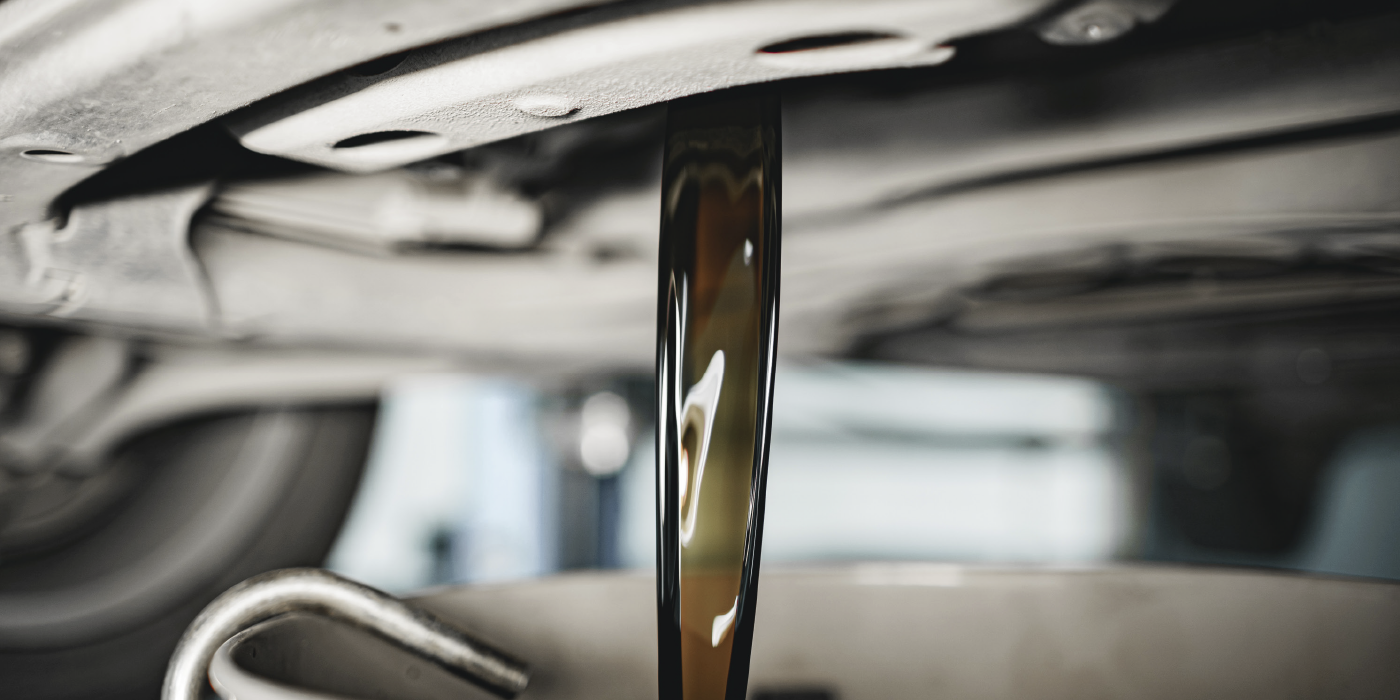The noise is caused by the control piston in the oil pump. To correct the condition, a modified control piston must be installed in the oil pump cover, as described in this Tech Tip.
Applicable Models:
• 2005-’06 Boxster (987) and Boxster S (987)
Affected Engines:
Engines manufactured since December 5, 2005, as of engine numbers:
M96.25 61 6 04763
M96.26 62 6 03668
Required Parts:
Part No. Description
997.107.125.01 New/control piston
996.107.123.50 Seal
Repair Procedure:
1. Remove the cover for the rear underbody using factory and/or industry standard approved practices.
2. Locate the screw plug in the oil pump cover. See Fig. 1, 1. 
Note: Oil will run out (0.25-0.5 liters) when you remove the screw plug/control piston.
• Place a suitable container underneath to catch the oil, taking precautions not to get oil on you or the floor.
Important: The contact surface in the oil pump cover can become damaged if an unsuitable tool is used for removing the control piston. Damage to the contact surface can cause the control piston to stick. This can reduce the oil pressure and damage the engine.
• If the control piston does not come out of the oil pump cover by itself, pull it out carefully using a suitable extraction device.
3. Remove the control piston.
4. Lightly oil the new control piston and use a new sealing ring, P/N 996.107.123.50. See Fig. 2, 2. 
5. Install the new control piston. See Fig. 2.
6. Tighten the screw plug to a tightening torque of 37 ft.-lb. (50 Nm), contrary to instructions in the vehicle technical manual.
7. Install the cover for the rear underbody using factory and/or industry standard approved practices.
8. Check the engine oil level display in the instrument cluster and top up the oil, if necessary, using factory and/or industry standard approved practices.
9. Start and run the engine, and check the oil pressure per specifications.
Written by ALLDATA Editor Chris Burton and ALLDATA Technical Writer Jeff Webster.













